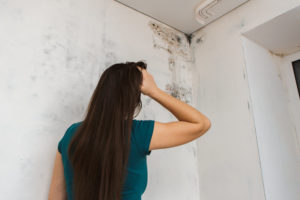 |
Dr. Karen D. Johnson, M.D. Functional Medicine Doctor CIRS Diagnosis & Treatment Expert |
Overview | Testing your Home | Steps 1-12 | Timeline
In our last article, we talked about how CIRS affects your body, and why it is so often overlooked or misdiagnosed. But once you know you have CIRS, what can you do about it? Thanks to the research of Dr. Ritchie Shoemaker, MD, who is a world renowned expert in the field of biotoxin illness who first described CIRS, we now have clinical validation supported by thousands of cases for the diagnosis and appropriate treatment of CIRS.
Protocol Overview: What to Expect
At its core, Dr. Shoemaker’s treatment is designed to help the body eliminate biotoxins, and address imbalances caused by the biotoxins and the ongoing immune response.
To achieve that, Dr. Shoemaker developed a protocol based on the pathway biotoxins take in genetically susceptible people. In other words, we look for specific known abnormalities caused by biotoxins and address them. This means that your doctor may tailor some of the treatment options based on your lab results, how your body responds, and other factors.
Just to set some expectations, many of these steps are very technical in nature. I do find, however, understanding the objectives and some of the key methods we use can be very helpful in the process. So, I hope you find this information useful in your journey to be CIRS free. Knowing the how and why behind some of these treatment steps to reverse and cure CIRS is an important part of understanding the condition.
Dr. Shoemaker’s Protocol Steps
Below are some of the main steps in Dr. Shoemaker’s protocol. As I have mentioned, depending on your unique situation, some of these steps may not be applicable to you.
Step 1: Stop Exposure
This step primarily applies to CIRS caused by water damaged building. It is the step many patients find extremely challenging, for obvious reasons. For some, it may mean remodeling their home. For others, it might mean changing job locations or even transferring their kids to a new school. It is essential, that you stop the exposure. You will see no improvements as long as ongoing exposure to the biotoxin continues.
Due to the many challenges in this step, I work closely with my patients from the very beginning. Just like treating your body requires an in depth understanding of CIRS, so does healing your home from biotoxins.
Is My Building Making Me Sick?
 Testing your home or workplace for biotoxins is very important, but not always straightforward. You can still be exposed to biotoxins in water damaged buildings, even if there is not an active mold problem.
Testing your home or workplace for biotoxins is very important, but not always straightforward. You can still be exposed to biotoxins in water damaged buildings, even if there is not an active mold problem.
What happens in many cases, is that a water problem in the building is remediated, the mold is removed. But, as the mold and other microbes dry, their cell walls break apart and they start floating through the air. These toxins can circulate in the HVAC system, upholstery, porous material, and other areas in your home. As a result, even after the water damage is repaired, you can still have daily exposure to biotoxins.
This common problem is specifically addressed as a part of the protocol. Certain do-it-yourself kits such as ERMI or HERTSMI-2 are used to collect dust samples from your house or workplace. Based on the results, you can tell if there is a significant load of biotoxin still in the house from previous microbial growth, or if it is safe. If the level indicates a high degree of toxins, we often work with indoor environmental professionals that are familiar with CIRS, so you can effectively address remediation.
On that note, if you see the presence of black mold in your home, I wouldn’t wait for the kits. You must immediately have the mold removed. In the meantime, while you may still be testing or repairing the affected areas, one option may be to clear one room in the house and see if you feel better. Certain air purifiers can also help to remove some of these particles from the room.
Step Two: Remove Biotoxins From the Body
While the majority of the population can effectively eliminate biotoxins, due to genetic factors CIRS patients can’t. To address this issue, we use specific agents that have the ability to bind to biotoxins in the body, so they can be eliminated in the stool.
Cholestyramine (CSM), a prescription drug that is approved to treat elevated cholesterol, is very helpful also as a binder. Due to its positive charge, CSM attracts the negatively charged biotoxins in the bile. The biotoxins are then bound to CSM in the gut and eliminated through normal bowel movements. This process needs to be monitored carefully, since CSM can also bind to other medication and supplements.
On that note, as a part of the protocol CSM is being used off label. This means it is not FDA approved to treat CIRS. Other steps in the protocol may include off label use of certain drugs.
Side effects form CSM use include constipation, gas and bloating. Being constipated at this stage is a problem that should be addressed as soon as possible. Constipation can cause the biotoxins that are now bound to the CSM stay longer in your body. Dietary fiber, magnesium and other bowel stimulants may be required to treat or prevent constipation. As I mentioned, work closely with your doctor to identify these potential problems and take actions if any of these issues occur.
Treatment with binders should be done for a minimum of 30 days. Depending on the VCS test, lab results and symptoms present, a longer time may be necessary.
Step Two, Additional Options:
- Welchol:
Another cholesterol lowering prescription drug with a biotoxin binding effect that may be used as an alternative to CSM. It is less effective compared to CSM but may have fewer side effects. - Omega 3 (3-4 grams):
May help to minimize CSM side effects when taken daily starting one week before the CSM use. - Low amylose diet:
Can help reduce insulin levels and inflammation in the body. In this diet you avoid foods high in amylose such as potatoes, grains, green bananas, yams, root vegetables, and wheat (gluten).
Step Three: Eradicating MARCoNS
A common problem seen in many CIRS patients, is the overgrowth of staph bacteria called multiple antibiotic resistant coagulase negative Staph (MARCoNS) in the nasal and sinus cavity. MARCoNS secrete toxins that can increase inflammation. If the nasal culture is positive for MARCoNS, it is treated with colloidal silver/EDTA nasal spray.
Initial treatment for MARCoNS is done for 30 days. If your tests are still positive after this time, this can indicate ongoing exposure to biotoxins or other family members or pets may be the source of re-infection, so further steps should be considered with your doctor.
Step Four: Gluten Free Diet
 You may be wondering, how can avoiding gluten help get rid of CIRS? As it turns out, certain CIRS patients have autoimmune issues, including sensitivity to gluten. This means that eating foods that contain gluten such as wheat, rye, barley and others can lead to more inflammation. This is not a desirable outcome when your immune system is already overactive with CIRS. For this reason, we specifically test for anti-gliadin gluten antibodies as a part of the protocol, and if these are present, we work with the patient on a gluten-free diet for a minimum of 3 months.
You may be wondering, how can avoiding gluten help get rid of CIRS? As it turns out, certain CIRS patients have autoimmune issues, including sensitivity to gluten. This means that eating foods that contain gluten such as wheat, rye, barley and others can lead to more inflammation. This is not a desirable outcome when your immune system is already overactive with CIRS. For this reason, we specifically test for anti-gliadin gluten antibodies as a part of the protocol, and if these are present, we work with the patient on a gluten-free diet for a minimum of 3 months.
On that note, there is something else for you to consider about gluten. I see many patients who are gluten sensitive as a result of a leaky gut. These patients feel much better after eliminating gluten, even if their tests are negative. So, going gluten-free during the CIRS protocol is definitely an option worth trying with absolutely no risk.
Step Five: Correct Sex Hormone Levels
As a result of the chronic inflammation, it is very common for CIRS patients to develop imbalances in their androgen sex hormones. Men often end up with both low testosterone and high estrogen due to an overactive aromatase enzyme (the enzyme that converts androgens into estrogen). Correcting these imbalances should be carefully done while monitoring the lab results, to make sure the hormones remain balanced. If testosterone is given directly for example, it may be converted to too much estrogen, worsening the imbalances.
Besides affecting your sex drive, sex hormone imbalances often lead to many other symptoms including mood swings, weight gain, and low energy levels. With CIRS, these imbalances are resolved once the underlying overstimulation of the innate immune system is addressed.
Step Six: Correct Antidiuretic Hormone Imbalances
A large number of CIRS Patients often experience increased urinary frequency, excessive thirst, and dehydration. The more they drink, the more they urinate, and this vicious cycle seems to never end.
The reason behind these “mysterious” symptoms is abnormal values of the anti-diuretic hormone (ADH) that controls the salt and water balance in our body. To correct the water balance issue, Desmopressin (DDAVP), a synthetic form of the anti-diuretic hormone, is used.
The above imbalances need be monitored with extreme caution, including your daily weight, blood pressure, electrolytes and others markers.
Step Seven: Correct Elevated MMP-9
Matrix metalloproteinase-9 (MMP-9) is an enzyme involved in the degradation and remodeling of tissues in order to support the immune system response to a threat.
Once triggered by the innate immune system, MMP-9 makes the blood vessels become “leaky”. This allows inflammatory elements to pass more readily out of the blood vessels to the site of the injury, including the joints, lung, nerves and the brain.
While this mechanism is needed short term when we have an acute injury, it is a serious health concern on an ongoing basis. This process results in a constant delivery of inflammatory compounds into these tissues.
Treatment focuses on reducing inflammation in the body. It includes a low amylose diet and omega 3 supplementation (3-4 grams daily) for one month. If there are no improvements after this time, additional treatment options should be considered.
Step Eight: Correct VEGF
As a result of the ongoing delivery of inflammatory compounds into tissues, blood vessels can also become blocked and there may be reduced blood flow and oxygen into the cells. When this happens, you are likely to feel fatigue.
This can be observed with lab testing by looking at the Vascular Endothelial Growth Factor (VEGF) levels. VEGF is a small protein that stimulates the growth of new blood vessels. Depending on your VEGF levels, a low amylose diet and omega 3 supplementation may still be needed until the VEGF abnormalities are resolved. As you can see, your diet, the foods you eat or more importantly don’t eat, are very important in order to reduce the inflammation.
Step Nine-Ten: Correct C3a & C4a Levels
C3a and C4a are anaphylatoxin (allergy causing) compounds that are produced by the innate immune system. Both C3a and C4a can cause swelling, histamine release, contraction of smooth muscles, and other symptoms of an allergic reaction.
If you have elevated C3a level it is important to identify the underlying cause, as additional treatment may be required based on the type of bacterial infection. Your doctor will evaluate these as a part of the protocol, including Lyme disease.
Treatment options:
- C3a: High dose of statins to reduce the C3a levels. Side effects may include muscle pain, fatigue and elevated liver enzymes. CoQ10 supplementation 10 days before the statins use can help to reduce some of these side effects.
- C4a: depending on lab results and protocol progress, VIP nasal spray may be used.
Step Eleven: Correct Elevated TGF-beta-1
Transforming Growth Factor (TGF-beta-1) is a protein that plays a key role in regulating the immune system. Not surprisingly, due to the overactivation of the innate immune system, it is common for CIRS patients to have elevated TGF-beta-1. Overtime, this can lead to remodeling of lung tissues causing shortness of breath and asthma-like symptoms. Other organs in the body such as the liver, heart and kidneys may be affected as well.
To normalize TGF-beta-1, Losartan, an over the counter drug commonly used for high blood pressure is used, due to its ability to produce degradation products that can lower TGF-beta-1. Losartan may not be suitable for people who have low blood pressure, so your doctor may prescribe alternative options such as VIP nasal spray.
Step Twelve: Correct Low VIP
Vasoactive Intestinal Peptide (VIP) is a hormone involved in regulating inflammation, blood flow and other immune responses. Depending on your test results and progress made with the previous protocol steps, VIP nasal spray may be used to normalize levels, which can help restore other imbalances and symptoms. VIP nasal spray may also be helpful for CIRS patients with multiple chemical sensitivities by down regulating olfactory driven neurons.
Dr. Shoemaker’s Protocol Timeline
I find the average time it takes to completely reverse CIRS and be back to normal function is 6-12 months. You may notice significant improvements much sooner than that, though.
A newer and promising approach that may accelerate this process, is a new genetic test called GENIE Test. This test looks into expression of specific inflammatory genes related to CIRS which provides more detail about a person’s unique genetic response. With that knowledge, we can tailor a more specific treatment that may be more effective and timely.
Final Thoughts
Thanks to the research of Dr. Shoemaker, we now have a systemic approach to diagnose and treat CIRS, supported by thousands of cases of people who were cured, helping you to get back to your normal life CIRS free, even if you are genetically susceptible.
As I mentioned in my introduction to CIRS article, even if you have the HLA susceptible haplotype, you don’t have to live in a bubble to avoid biotoxin exposure. Become aware of the common sources to prevent exposure as much as possible and know what actions to take in case of re-exposure. These are also addressed as a part of Dr. Shoemaker protocol. Knowledge is the key.
I hope you have found this information helpful. I wish you the best of luck in your journey to a healthy CIRS free you.
